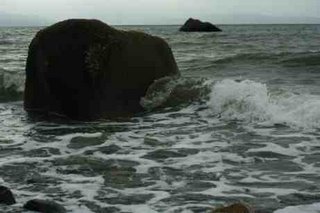Cartas de amor
I was able to get my library card and start research at the Manuscrits occidentaux at Richelieu all by myself, but I had Julie’s help at François-Mitterand. I’ve never been to the Library of Congress, but the Bibliothèque nationale de France is beyond anything I could have imagined. The entrances are on the roof, so one descends into the building. Entering the stacks is, in 80s [?] lingo, super hi-tec. With my book and seat (U8) reserved on computer, I walked toward the metal doors at the end of the lobby. I inserted my library card in the slot to the right of the turnstile, walked through, retrieved my card, and pushed on one of the 4 tall doors. I found myself alone in a chamber with metal walls, facing a row of tall doors identical to those I’d just come through. It felt weird, but maybe just because it was so stark, and not because I was being scanned for magnetic bar codes. I pulled on the door and to my right was an escalator down, with metal fibre drapes on the walls. Two flights down was another turnstile [card in, spit out], and an information desk. The stacks are on this bottom floor, and past the information desk is an identical set-up [turnstile, metal doors, Star Trek holodeck chamber, more metal doors]. I turned left and walked past the lounge, the computer area, the smoking lounge and then turned right down the glass corridor that separates the stacks and reading rooms from a walled-in jungle. Went up half a flight of stairs and got my book from the librarian: Cartas de Amor.
I thought when I read them that Asturias’ love letters are like anyone’s, really, in that they’re not really about the beloved but more about the lover, and the lover’s experience of love. Asturias, from his letters, seems like he would have been a covetous lover, wanting lots and lots of communication and assurance. But his letters also mixed in a great deal of bureaucracy: Blanca, left behind in Buenos Aires, has to take care of all his unfinished business—sending him his trunks, some carpets he wants to sell, proof of the quality of said carpets, etc. His letters from Guatemala are full of instructions on how she should accomplish these tasks.
What does pertain to her, perhaps, is what of life he chooses to share with her (his readjustment to his family, his sons and country; the successful completion of novel one of the Banana Trilogy; and his political concerns), the plans that he makes for them both (traveling in the countryside, their marriage (once his divorce is final)), and the questions he asks her about his work. That is how I began to understand who Blanca is, at least for Asturias.
I read only his love letters, and they made me think about my own—the ones I’ve saved from my boyfriends but mostly about the ones I’ve written. A very selfish lover myself, I’ve often asked for them back when the relationship ends, without really thinking about why except that they’re mine once they’re no longer ours. But were they ever ours at all?


0 Comments:
Post a Comment
<< Home